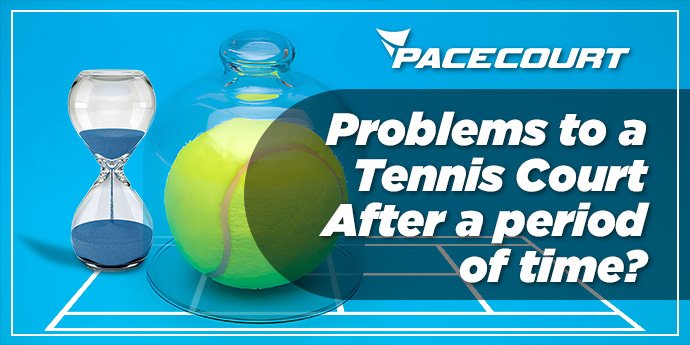Introduction
Tennis courts need to be suitable for both professional and amateur play, and flooring is important. Synthetic acrylic tennis court flooring is durable, easy to maintain, and offers top-notch performance. When you construct a new court or renovate one that already exists, its advantages will guide you to the right decision. In this blog, we are going to concentrate on the major features, advantages, and reasons for which synthetic acrylic is the best solution for sport complexes. We will discuss the installation cost of the tennis court, size of court and markings in order to get proper knowledge of construction of a tennis court.
Key Features of Synthetic Acrylic Tennis Court Surface
- Durability & Longevity: The synthetic acrylic surface is very durable and can withstand intense usage, weather, and general wear and tear. The floor boasts heat change resistance, rain resistance, and sunlight resistance with an assurance of a year-round warranty.
- Uniform Ball Bounce: The floor provides even ball bounce, which is a critical element of justice and therefore an early choice among amateur and pro level players alike.
- Low Maintenance: Acrylic courts are extremely low maintenance compared to grass or clay. They must be swept every day, washed every week, and resurfaced from time to time to keep the court in shape.
- Weather Resistance: Synthetic acrylic is made to withstand the harsh weather, rain, UV breakage, and scorching sun, hence ideal for outdoor applications.
- Aesthetic personalization: The surface may be personalized with bright colors and translucent markings, which impart aesthetic value and contribute to visibility during games.
Benefits of Synthetic Acrylic Tennis Court Flooring
- Improved Safety & Comfort: The floor is extremely cushioned, reducing the risk of injury, most particularly joint strain, to keep players safe at all levels.
- Ideal for All Levels: Whether you are a beginner or professional, synthetic acrylic flooring provides a uniform floor with even grip and slide for smooth movement.
- Cost-Effective Long-Term Solution: Though more expensive to use initially, its extended lifespan and low maintenance render synthetic acrylic an affordable long-term investment.
- Easy & Quick Installation: Faster and less labor-intensive installation than a grass or clay court, with reduced curing time away, available earlier for play.
- Sustainability: Synthetic acrylic is eco-friendly with recyclable materials and the ability to resurface and repair, using it for many years before replacement.
Selecting the Optimal Material for Synthetic Acrylic Flooring
In the process of searching for the quality material to use in synthetic acrylic flooring, it is important to investigate the reliability of the manufacturer and the quality of the material. Pacecourt is among the leading manufacturers of tennis court flooring material that supplies high-quality acrylic surfaces to achieve the ultimate performance, durability, and aesthetics. As a quality brand, Pacecourt guarantees your tennis court flooring to last longer, have a better bounce, and be maintenance-free.
Tennis Court Dimensions and Line Markings According to ITF Standards
When building a tennis court you must follow the ITF standards for tennis court dimensions and line markings so players of all levels can have a professional and consistent experience.
- Length: 78 feet (23.77 meters)
- Width: 27 feet (8.23 meters) for singles and 36 feet (10.97 meters) for doubles. That extra width for doubles gives players a bit more room to move around.
- Total playing area: That’s about 7,200 square feet (668.9 square meters) including the run-off areas around the court.

Line markings are just as important. The ITF standards define these lines and areas:
- Baseline: The line at the back of the court, the length of the playing area.
- Service line: 21 feet (6.4 meters) from the net. That’s where the serve has to land.
- Centre line: Divides the court in half for singles and doubles play.
- Center mark: The spot at the center of the baseline, where players line up their serves.
- Sidelines: The boundary lines on either side of the court. Those are wider for doubles.
Application and Installation Procedure
Acrylic tennis court surfacing needs a precise installation procedure, executed by experts to achieve a superior quality finish. This is essential in order to achieve maximum performance and durability of the court.
Installation Procedure:
Surface Preparation: The installer cleans and levels the surface of the court to achieve a smooth foundation.
Base Application: An acrylic resurfacer is applied to get a stable high performance base.
Color Coating: Two coats of color coatings are applied with a soft rubber squeegee for a smooth finish.
Precision and Quality: Professionals manage the whole installation process to get precision in every step.
Custom Markings: Custom colors and court markings are applied with masking tape for accuracy.
Extra Durability: To get extra durability the contractor adds an acrylic resurfacer mixed with approved silica sand to the court surface.
Case Studies
Case Study 1: Cracking of Tennis Courts Due to Poor Drainage
Problem:
A Mumbai-based private sports club was facing recurrent cracking on its tennis courts because the drainage was poor. Water was piling up in some areas and creating soft spots, resulting in surface cracking.
Solution:
We employed a qualified resurfacing contractor and procured the materials from Pacecourt. We laid an efficient drainage system for free flow of water and used high-quality acrylic coatings. A good rubberized crack repair system was used to restore existing cracks.
Results
The court was in great shape for more than 6 years and required very little maintenance. The resurfacing and drainage upgrade greatly minimized the likelihood of cracks and improved the overall player experience.
Case Study 2: Severe Weather-Related Surface Damage
Problem:
A school in Delhi suffered from intense fading and cracking of their tennis court due to long exposure to the hot sun and monsoon rains. The corroded asphalt base rendered the court unplayable.
Solution:
The school chose the option of the full resurfacing of the court with UV-resistant acrylic paint and crack-fixing system. Several coats of protection coatings were applied to increase the life of the court.
Results:
The resurfacing process enhanced playability, increased the life of the court, and was a cost-efficient long-term solution. The improved surface rendered the court safer for students and athletes and enhanced its appearance.
Cost Factors: How Much Does it Cost to Install or Construct a Tennis Court?
The cost of installing a tennis court can vary based on the location, material, and design features. Below is an estimated costing:
- Base Preparation: ₹4,00,000
- Concrete or Asphalt Foundation: ₹16,00,000
- Acrylic Surface Coating: ₹4,00,000
- Fencing and Lighting: ₹8,00,000 (optional)
Installation cost of a tennis court in a home backyard generally is around ₹24,00,000 depending upon the size, design, and location of the court.
Even though these will depend on certain specifications, selecting synthetic acrylic flooring will generally prove to be a good investment as it has high durability over long periods and needs very little maintenance.
Conclusion
Synthetic acrylic tennis court surfacing offers many benefits from longevity and low maintenance to consistent playing surface and looks. Whether you’re building new or renovating for play, choosing synthetic acrylic from a reputable tennis court surface supplier like Pacecourt gives you peace of mind that your court will perform at its best for years to come. Because of its long life, low maintenance and cost effective synthetic acrylic is the choice for any tennis facility. Start your tennis court project?
Contact Pacecourt today for advice, top quality acrylic surface materials.
Frequently Asked Questions
Fill cracks with filler and afterwards use acrylic resurfacer. Daily cleaning and upkeep will avoid further damage.
A tennis court size is 78 feet in length and 27 feet in width for singles, 36 feet for doubles, total playing area 7,200 sq. ft.
A tennis court construction costs between ₹32,00,000 to ₹64,00,000 based on site conditions, material and facilities such as fencing and illumination.
A tennis court must be resurfaced every 5 to 7 years based on usage and climate.
Synthetic acrylic is the optimum material for tennis courts as it is durable, easy maintenance and uniform playing surface.





